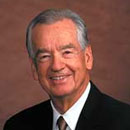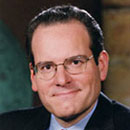One year in, California's $20 minimum wage for fast food workers is lifting boats but still debated
Published in Business News
One year has passed since 400,000 California workers at fast food chains like McDonald’s and Taco Bell began earning $20 per hour — a special minimum wage that’s thrilled employees and unions but remains vehemently opposed by the restaurant industry, which argues the higher pay has come at a cost of thousands of jobs.
Romualda Alcazar Cruz, 51, preps sandwiches and burgers at a Wendy’s restaurant on International Boulevard in East Oakland. Cruz, who has worked in fast food for seven years, used to earn the old minimum wage of $16.50 per hour.
That is, until April 2024, when a hotly-contested California law went into effect that spiked the earnings floor to $20 per hour for workers at 25,000 fast food restaurants, including the chains Wendy’s, In-N-Out Burger, Chipotle and Starbucks.
One year later, Cruz said she’s better able to support herself and her husband, who live together in a one-bedroom apartment in Oakland.
“It’s been really good,” Cruz, who speaks Spanish, said through a translator. “It’s helped with a lot to cover our bills, our rent, our groceries.”
In 2022, the California Service Employees International Union kicked off an intense campaign to lobby state lawmakers to raise the minimum wage in the fast food industry, a sector it views as a legitimate career path for workers, but one rife with crummy working conditions.
The restaurant industry pushed back hard, arguing the spike would force business owners to hemorrhage jobs and raise prices as much as 20% for customers craving their fast food fix.
The wage increase “has only led to restaurant closures, price increases, and the loss of thousands of jobs,” Jot Condie, president of the California Restaurant Association, said in a statement, calling it a “policy experiment-gone-wrong.”
In March, the restaurant industry cited U.S. Bureau of Labor Statistics data showing that more than 16,000 jobs in the fast food sector were lost in the year after California after Gov. Gavin Newsom signed the law, Assembly Bill 1228, in September 2023.
“Is the benefit worth it for the pain that it’s exacted?” said Christopher Thornberg, an economist with the private consulting group Beacon Economics. Thornberg has produced studies paid for by the restaurant industry, including the 2022 study that estimated 20% cost increases driven by the higher wages.
“Some people are being helped — those workers who are keeping their jobs,” he said.
Michael Reich, an economics professor with the the Institute for Research on Labor and Employment at UC Berkeley, disagrees that the policy has driven significant job losses or price hikes and says it gives workers a much-needed leg up.
“It’s very helpful,” he said in an interview. “It’s led people to buy a used car, or replace a used car. It’s been shown to reduce bankruptcies and increase credit scores.”
Though she is adamant that the wage boost isn’t hurting business owners, Cruz said she’s making only slightly more than she was last year because her managers at Wendy’s cut her hours after the minimum wage went up. The restaurant also raised prices four or five times in the last year, she said. Wendy’s representatives did not immediately comment.
Selvin Martinez, a 30-year-old employee at the Wienerschnitzel hot dog chain in Campbell, said the pay spike is helping him support his parents and siblings while making ends meet in the South Bay, one of the most expensive housing markets in the U.S. He rents a $1,000-per-month room in San Jose.
Martinez said his manager hasn’t cut his hours or those of his coworkers, or laid off employees. A spokesperson for the hot dog chain did not immediately respond when asked to comment.
“I feel blessed,” Martinez, who also speaks Spanish, said through a translator. “Because now I can pay my bills on time. I finally have savings. And I can help my family as well.”
Even with the higher minimum wage, fast food workers like Martinez are earning far less than the $35 per hour that’s the living wage for even a person with no dependents in the South Bay, according to an often-cited Massachusetts Institute of Technology estimate.
Joseph Bryant, international executive vice president of Service Employees International Union, the $20 wage lifts up a “vulnerable” workforce that’s composed mostly of people of color and a fair share of residents living in the U.S. without permission, who have turned to fast food for long-term employment. The union represents about 1,000 fast food workers in the state and is pushing to organize more.
“I think there’s this false conception of fast food workers that these are high school kids working part-time to make extra cash,” he said. “But you have some folks that have been in for decades.”
Bryant brushed off suggestions that the wage increase has any negative impacts, nodding to other California economists who have reached drastically different conclusions so far. Although academics are trading barbs and casting doubt on each other’s methods, they do agree that the effects of the $20 wage will become clearer in the coming months and years.
The union cites largely positive research published by the Institute for Research on Labor and Employment at UC Berkeley. Reich, the economics professor, said the higher wages have benefited workers without evidence of a downside so far.
In February, Reich published a brief study that found wages had risen about 9 percent among the 400,000 workers covered under the policy, citing U.S. Bureau of Labor Statistics data that he cross-reference with postings on the job listing site Glassdoor.
Meanwhile, prices at these restaurants increased by 1.5%, he said, or about six cents on a $4 hamburger, the study found. According to the World Population Review, the average 2025 price of a Big Mac in California is the ninth-highest of U.S. states, at $5.89.
In that paper and an earlier study published in September, Reich said he did not find evidence of what he called “magical thinking” in the restaurant industry that the contentious policy would spike food prices or spur layoffs.
Thornberg, the private consultant, found the opposite in his own brief study of the policy that published earlier this month, which restaurant industry groups have cited.
Drawing on a different dataset, from the California Employment Development Department, Thornberg found that California’s fast food industry lost 23,000 jobs, or 3% of its workforce, while the nationwide industry grew slightly since last spring.
Thornberg said it’s too soon to draw conclusions and chided Berkeley’s labor center for “fist-bumping themselves” and calling the minimum wage increase “a big win.” He said it could take economists as long as a year and a half to see the policy’s full effects.
“Stop calling it a victory,” he said. “It’s too early.”
Reich said he plans to publish another study of his own in the coming months.
_____
©#YR@ MediaNews Group, Inc. Visit at mercurynews.com. Distributed by Tribune Content Agency, LLC.












Comments